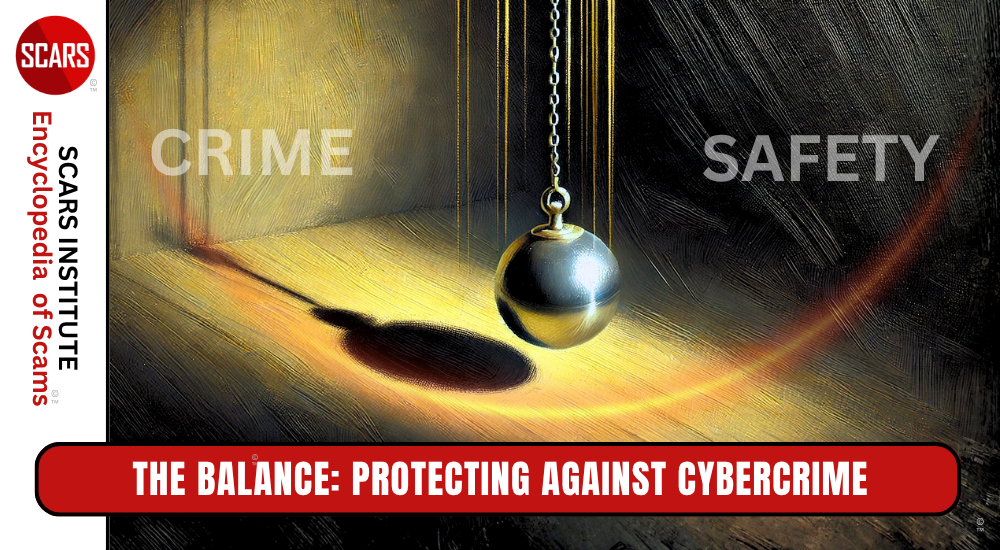God Help Millennials!
Millennials Are The Most Scammed Demographic
A SCARS Special Report
Our Latest Generation Of “Adults” Are Being Scammed At Faster Rates And In Greater Numbers Than Senior Citizens
Let’s face it, Millennials think they own the online world – they grew up with it, they live it every second of the day. But this same absolute confidence in their mastery of everything Internet is also their undoing.
WE ARE ALL DOOMED! AREN’T WE?
According to Inc. magazine:
Millennials Get Fooled by This a Lot More Than Older People Do – Are Millennials people of the world?
We pity the fool.
The only slight kink is that we’re the fool quite often and we have no pity for ourselves at all.
Still, you have an image of millennials being astonishingly au fait with technology, don’t you?
They meet each other not by looking at each other, but by swiping. They dump each other not by having reasoned interpersonal conversation, but by texting. And they don’t bother to talk to actual humans because they’re too busy swiping, dumping or doing something else very vital and virtual.
Here’s a surprise. Millennials fall for tech support scams more than, you know, older sorts.
Microsoft discovered that a fulsome 50 percent of millennials carried straight on with a nasty web interloper, believing that this incursion into their lives was genuine. Those 55 and over tolerated this wheeze a mere 17 percent of the time. 34 percent of the indeterminate Gen X types succumbed.
Millennials are, you will say, so obsessed with a life lived virtually that they have no filter between virtual reality and a nefarious group of Eastern Europeans. (I come from a nefarious group of Eastern Europeans, so I’m allowed to make that joke.) I want to be more charitable, which doesn’t always come easy for me because I come from a nefarious group of Eastern Europeans.
Still, perhaps millennials are only too happy to receive offers of help through their interweb connection. Perhaps they’re more open-minded to the thought that someone would want to be on their side. Perhaps they’re just lonely.
Yes, this seems to result in millennials downloading software or visiting a scuzzy website that then attempts to divest them of their life savings.
Indeed, 55 percent of people in the US who go along with these scams end up losing money.Article Link: https://www.inc.com/chris-matyszczyk/millennials-get-fooled-by-this-a-lot-more-than-older-people-do.html
Four Years Ago, Microsoft Conducted A Major Survey Into Millennials & Scams
What they found is not very promising!
Microsoft: Millennials Are Fooled by Tech Support Scams
A new survey (in 2016) from Microsoft shows that millennials are more likely to be fooled by tech-support scams than older generations. Younger customers are being caught by pop-up ads, the company says.
t stands to reason that millennials are more tech-savvy than baby boomers. The former are aged 18-34 and have grown with technology over the last three decades. Post-World War 2 baby boomers (50-70 years old) are befuddled by all things tech, right? Well, not quite. A new Microsoft study finds that millennials are more likely to fall for tech-support scams than baby boomers.
The company carried out a survey that found pop-up ads catch out millennials more often. This is focused on scams pretending to be Microsoft tech-support. Actually, it is a very easy scam to avoid if all customers remember one simply thing. Microsoft will never take the first step and initiate contact for tech support.
If there is a tech problem, customer must contact the company. Microsoft will not send emails, calls, or messages in this regard. Try telling that to millennials (I am one, by the way). Gone are the days when scams target older confused customers. Instead, savvy attackers are getting younger customers through pop-up ads.
Microsoft’s survey found that 50 percent of millennials reported “continuing with a fraudulent interaction” once being exposed to the scam. For customers aged over 55 years, the number is a much more respectable 17 percent. Middle-aged Generation X customers (36-54 years) continued with fraudulent interaction 34 percent of the time.
Further Results From The Microsoft Survey
From the survey, Microsoft describes the following findings:
- 1 in 5 consumers surveyed continued with a potentially fraudulent interaction after first being contacted, meaning they downloaded software, visited a scam website, gave the fraudsters remote access to their device or provided credit card information or another form of payment.
- Nearly 1 in 10 have lost money to a tech support scam.
- Of those who continued with a fraudulent interaction, 17 percent of them were older than 55, while 34 percent were between the ages of 36 and 54.
- Surprisingly, 50 percent of those who continued were millennials between the ages of 18 and 34.
- Consumers in India (54%), China (35%), and the United States (33%) had a greater likelihood of continuing with the fraudulent interaction.
- In India and the United States, 1 in 5 reported losing money to these scams.
- The most common victim experience with tech support scams is through software downloads or visits to malicious websites.
- In the United States, 55 percent of those who continued with a scam, lost money.
- 92 percent of those who lost money in the United States said they have recovered at least some of their money. Fifty-eight percent in China and 67 percent in India have also recovered at least some of the money.
According To The Detroit Free Press – In a recent article, they found that:
Scammers are fooling millennials out of millions of dollars!
So you think retirees are the only ones being targeted by scammers? Not at all.
Millennials in their 20s and 30s are falling at a fast clip for online shopping fraud, con artists who pretend to be your boss, imposters who pretend to be from the federal government, fake check scams and business opportunities or work-at-home jobs.
Millennials, for example, are twice as likely as people who are 40 and older to report losing money while shopping online, according to reports to the the Federal Trade Commission’s Consumer Sentinel Network.
And it often doesn’t start with a robocall. Millennials are 77% more likely to report losing money to a scam that starts out with an email.
And millennials are 93% more likely than people age 40 or older to report losing money to fake check scams — which can be part of some frauds that are designed to look like a one step along the way for finding a cure for a financial headache.
One victim name Rinna remains baffled by that job scam:
“I’m not sure what their motive was and I wasn’t sticking around to find out,” she said.
“The only thing they got out of me was my name and address and a signature. A very poor quality signature.”
In similar job scams, though, the fraudsters often give the consumers a list of businesses where they’re supposed to buy the equipment or specific suppliers.
“Those ‘businesses’ are usually websites the scammer has also setup. It’s a very sophisticated scheme. She was probably correct in thinking the items would cost more on a legitimate website,” said Laura Blankenship, director of marketing for the Better Business Bureau Serving Eastern Michigan & the Upper Peninsula.
Millennial New Media Scams
Scammers, of course, chase the latest trends and now they’re trying to convince consumers that they must pay $80 to $100 to activate a new media player, virtual assistant, and other tech devices, such as Roku, Google Home or Alexa, according to a new warning from the Better Business Bureau.
Here’s how the scam works: You search for a customer support number online. But instead of getting the official website, you end up with a phony, look-alike site. You call that number and you are told there is a new policy in place: All device users must now pay an activation fee.
The scammers may ask for prepaid gift cards, or they may ask directly for your credit card number. “In some cases, they may ‘help’ you come up with a new username and password, thereby gaining access to your device account,” the BBB warns.
Scammers Have More Luck Using Social Media
New fraud research — a joint report by the FINRA Investor Education Foundation, the Better Business Bureau and the Stanford Center for Longevity — indicated that people are most likely to be ripped off when it comes to online purchases and scams that start off via social media or fake websites.
“When phone and email were used by scammers to target consumers, relatively few consumers engaged with the scammer or lost money,” according to the report called “Exposed to Scams: What Separates Victims from Non-Victims?”
“However, when exposed to a scam on social media, 91% engaged and 53% lost money.”
Those more likely to become victims, according to the report, included: Someone who feels lonely or experiences being isolated, perhaps widowed or divorced. Younger adults who are under financial strain.
What can help someone avoid a scam: Some media buzz about a particular scam or hearing word-of-mouth warnings about rip-offs. rip One-third of consumers who were targeted by a scammer — but did not engage — already knew about a specific scam, according to the “Exposed to Scams” research.
In the same Exposed To Scam study they found:
Respondents who were suspicious about the offer but who continued to engage were asked what would have helped them avoid engaging altogether.
One individual stated, “…if I had done the research before making the purchase.” Other suggestions were to speak with someone prior to engaging, use other websites to verify the pricing of the product, check the BBB website for complaints about the organization, and search for the address of the organization on Google Maps.
One person said, “not being distracted.” Recommendations also included looking for clues that the offer is fake, such as misspelled words in the message or a spoofed
email address.
The Stanford Study Also Learned That:
The path to victimization begins with engagement, and there are a number of factors that increase the likelihood of both engaging with a fraudulent offer and losing money.
The manner in which consumers are contacted plays a significant role in whether or not they engage and become victims. Because those contacted via digital means (social media and website) appear from this study to have high engagement and victimization rates, consumers should be particularly careful when sending money based on a digital message or ad.
The perception that a fraudster is “official” is highly associated with victimization. As titles and designations are easily faked, consumers should independently verify the identity of anyone who claims to be an authority and asks for money or information (e.g., call the agency directly to confirm, or use an online tool such as FINRA BrokerCheck).
Financial insecurity appears to increase the likelihood of victimization, as do low levels of financial literacy.
More than half of people who reported a third-party intervention were able to avoid losing money. This is a promising finding and speaks to the potential of this approach to reduce fraud victimization given these interventions generally occur at a point when consumers are on the cusp of sending money to a scammer.
In terms of protective factors, knowledge is power. Prior knowledge about fraud, even generally, is particularly helpful in avoiding victimization.
Before complying with a solicitation, consumers should consult with those around them to verify the legitimacy of the offer or the threat. This strategy is helpful because it harnesses collective knowledge about scams and persuasion tactics from friends, family, neighbors, and whoever else is present at the time of the solicitation. These people might encourage the target to pause and take time to assess the situation.
Unfortunately, our own experience of nearly 30 years teaches us that few victims ever consulted anyone or attempted to learn about scams beforehand. This is especially true for millennials where urban legends and influencers spread false information that can actually lead to greater vulnerability. The source of information is more important the just the substance, and millennials are notoriously biased against non-millennial sources.
The Result?
Millennials (and also teens) are the fastest-growing demographic for online fraud and scams, and nothing is likely to change this. Worse still, older victims are 10x more likely to seek out help after a scam with reliable and credible sources, whereas millennials tend to seek knowledge from poorly equiped peers and influencers further deepening the scam information gap.
-/ 30 /-
What do you think about this?
Please share your thoughts in a comment below!
Article Rating
Table of Contents
RATE THIS ARTICLE?
LEAVE A COMMENT?
Recent Comments
On Other Articles
- Taci Fernuik on How You Think & Talk About Your Scam Affects Your Recovery: “I have hung on to the scams for far too long. With the intervention of an all-merciful God, I have…” Nov 6, 22:13
- on Disengaging From A Fake Scam Relationship: “Taci, you may want to join our new support community at www.SCARScommunity.org” Nov 6, 03:01
- on Disengaging From A Fake Scam Relationship: “This particular article helped me discover the many things I did wrong the first time I was scammed. I should…” Nov 5, 22:49
- on About the SCARS RomanceScamsNOW.com Website – 24 Years Published: “It was unavailable for a few days, but it is available again. If he would be interested, he is welcome…” Nov 5, 00:59
- on About the SCARS RomanceScamsNOW.com Website – 24 Years Published: “My husband has been scammed and your classes have been helping him but now he can’t seem to access them.…” Oct 26, 14:57
- on Talia Shepard – Impersonation Victim – Stolen Photos – 2024: “Hi, I’m Patrick from Belgium and I found this site by chance, so I just got to know it, and…” Oct 17, 23:46
- on Talia Shepard – Impersonation Victim – Stolen Photos – 2024: “Hallo ik ben Patrick uit Belgie en het is in verband over PayPal. Ik heb het dit jaar spijtig genoeg…” Oct 17, 23:08
- on Debt Relief Scams – Catalog of Scams – 2024 UPDATED 2025: “Before you make any decision, stop, think, and ask someone you trust for advice. No matter how difficult your situation…” Oct 9, 07:06
- on Shemar Moore – Stolen Photos – Impersonation Victim – 2024: “KM, sadly, this was available 5 years ago. The is a 25 year old website. Of course, new content is…” Oct 6, 13:27
- on Shemar Moore – Stolen Photos – Impersonation Victim – 2024: “Me too, since 2020. I’ve dealt with a lot of them till now. They’ve completely manipulated me and put me…” Oct 6, 00:48
ARTICLE META
Important Information for New Scam Victims
- Please visit www.ScamVictimsSupport.org – a SCARS Website for New Scam Victims & Sextortion Victims
- Enroll in FREE SCARS Scam Survivor’s School now at www.SCARSeducation.org
- Please visit www.ScamPsychology.org – to more fully understand the psychological concepts involved in scams and scam victim recovery
If you are looking for local trauma counselors please visit counseling.AgainstScams.org or join SCARS for our counseling/therapy benefit: membership.AgainstScams.org
If you need to speak with someone now, you can dial 988 or find phone numbers for crisis hotlines all around the world here: www.opencounseling.com/suicide-hotlines
A Note About Labeling!
We often use the term ‘scam victim’ in our articles, but this is a convenience to help those searching for information in search engines like Google. It is just a convenience and has no deeper meaning. If you have come through such an experience, YOU are a Survivor! It was not your fault. You are not alone! Axios!
A Question of Trust
At the SCARS Institute, we invite you to do your own research on the topics we speak about and publish, Our team investigates the subject being discussed, especially when it comes to understanding the scam victims-survivors experience. You can do Google searches but in many cases, you will have to wade through scientific papers and studies. However, remember that biases and perspectives matter and influence the outcome. Regardless, we encourage you to explore these topics as thoroughly as you can for your own awareness.
Statement About Victim Blaming
Some of our articles discuss various aspects of victims. This is both about better understanding victims (the science of victimology) and their behaviors and psychology. This helps us to educate victims/survivors about why these crimes happened and to not blame themselves, better develop recovery programs, and to help victims avoid scams in the future. At times this may sound like blaming the victim, but it does not blame scam victims, we are simply explaining the hows and whys of the experience victims have.
These articles, about the Psychology of Scams or Victim Psychology – meaning that all humans have psychological or cognitive characteristics in common that can either be exploited or work against us – help us all to understand the unique challenges victims face before, during, and after scams, fraud, or cybercrimes. These sometimes talk about some of the vulnerabilities the scammers exploit. Victims rarely have control of them or are even aware of them, until something like a scam happens and then they can learn how their mind works and how to overcome these mechanisms.
Articles like these help victims and others understand these processes and how to help prevent them from being exploited again or to help them recover more easily by understanding their post-scam behaviors. Learn more about the Psychology of Scams at www.ScamPsychology.org
Psychology Disclaimer:
All articles about psychology and the human brain on this website are for information & education only
The information provided in this article is intended for educational and self-help purposes only and should not be construed as a substitute for professional therapy or counseling.
While any self-help techniques outlined herein may be beneficial for scam victims seeking to recover from their experience and move towards recovery, it is important to consult with a qualified mental health professional before initiating any course of action. Each individual’s experience and needs are unique, and what works for one person may not be suitable for another.
Additionally, any approach may not be appropriate for individuals with certain pre-existing mental health conditions or trauma histories. It is advisable to seek guidance from a licensed therapist or counselor who can provide personalized support, guidance, and treatment tailored to your specific needs.
If you are experiencing significant distress or emotional difficulties related to a scam or other traumatic event, please consult your doctor or mental health provider for appropriate care and support.
Also read our SCARS Institute Statement about Professional Care for Scam Victims – click here to go to our ScamsNOW.com website.


















Thank you for your comment. You may receive an email to follow up. We never share your data with marketers.